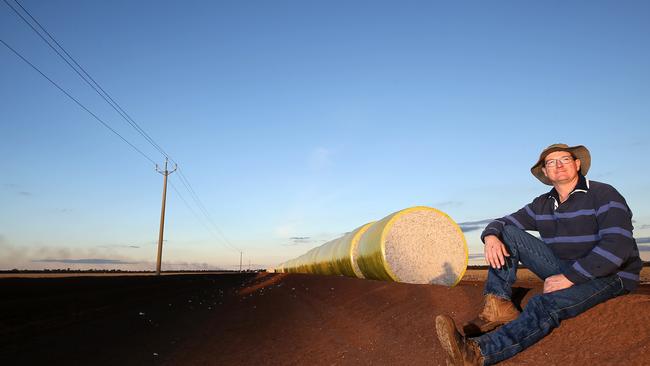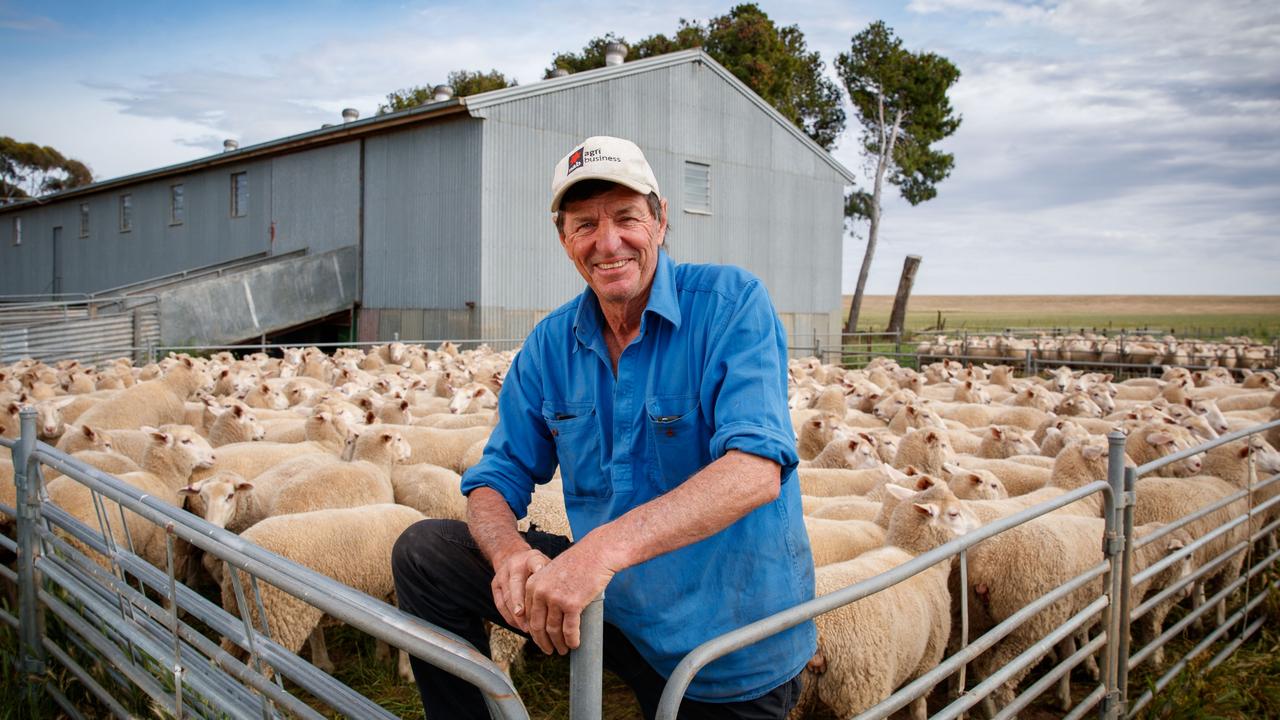Cotton farmers Ben and Kim Witham from Coleambally NSW among the tops of the crop
When it comes to growing cotton this couple is reaping the rewards — and accolades.

RIVERINA irrigators Ben and Kim Witham have cottoned on to the best enterprises for their farm and the ones that make the figures pop.
Ben grows a unique mix of cotton and popcorn on the family farm at Coleambally, NSW, and has found the two enterprises that can sit alongside each other.
It is his attention to detail and dedication to growing high-quality crops that he has led him to being named a finalist in Cotton Australia’s Cotton Grower of the Year awards, with the winner announced late next month.
It is a stellar effort for the farmer, who has been growing cotton for only eight seasons.
His consistently high yields and dedication to growing the highest quality cotton have been given as the reasons for his nomination.
BREEDING VALUES MAKE SENSE FOR ACTION FIGURE
ISLE OF DREAMS TURN INTO REALITY
MERINO SHEEP ARE THE MIX MASTERS
Ben began growing cotton in 2010, with his first harvest in 2011. He switched to it after many years growing maize for grit and starch markets.
“There seemed to be an almost annual lack of demand for corn and we were looking to be able to make more money per megalitre of water we used,” Ben said.
“But it’s not just a matter of deciding to switch from maize to cotton, even though we could grow the cotton on beds like we were with the maize.
“Cotton is a much more fragile crop, and you can’t just do the same thing year in, year out, as you can with maize. It is worth the effort though, because if you do what you can to maximise yield, you can get a good return, but that is balanced by the production risk.”

BALE OUT
SINCE that first early crop, the Withams have grown about 150ha of cotton each year, and have posted an above district-average yield of 12 bales a hectare for the past seven years.
The current cotton crop has only just been delivered to the gin, so the yield this year is unknown.
But Ben predicts it will be lower, due to very hot summer conditions.
He said cotton could be a temperamental crop to grow.
It did not like the cold, especially when the crop was establishing itself after planting in spring.
Nor did it like the heat and it was particularly affected by this year’s extreme conditions in summer.
“I often wonder what climate it does like,” Ben said.
He takes his pointers on management by working closely with his agronomist and implementing advice given in a timely manner.
“We like to grow a quality crop, and we have been very lucky in that we do not seem to receive discounts for the cotton we have delivered,” he said.
Cotton can be discounted for a number of things, including leaf (trash), colour, length and micronaire.
“When others do their figures, they might find that they do not use the inputs we do, and their gross margin might look a little better,” Ben said.
“We are determined to grow a quality crop and to maximise yield and understand that this sometimes comes at a cost,” Ben said.
SUMMER-LOVING
COTTON’S march south has seen it grown alongside other summer crops produced for human consumption, something not often seen in the more traditional cotton growing areas of central and northern NSW and Queensland.
Ben grows a crop of popcorn each year, and said there were no problems running the two enterprises on the 1150ha farm.
Normally they grow a 50:50 split of cotton and popcorn, but opted for a different mix this year of 250ha of cotton and 40ha of popcorn based on projected returns.
“The people we supply popcorn to are very diligent, and come out to check the crops and make sure we are doing the right thing,” he said.
“We have never had any problems with growing cotton and popcorn.
“Cotton can get a bad rap at times, but if it is grown correctly, there shouldn’t be a problem.”
Ben is vigilant with his spraying regimen and implements integrated pest management to maximise the use of beneficial insects alongside any spraying needing to be done.
He uses a ground rig wherever possible for spraying, and uses an experienced owner operator for aerial spraying who has a long history of accurate application.
MAKES SENSE
BEN said IPM was incredibly important, not only to build up beneficial insects, but also help prevent resistance to chemicals.
“Cotton had a bad rap in the pre-GM (genetic modification) days, because the farmers were doing 12 to 15 insecticide sprays because they had to,” he said.
“Now we have GM cotton, we can cut this down dramatically. Some people seem to think that GM is terrible, but it has allowed us to have a much cleaner crop than before, with fewer chemicals.”
The cotton-popcorn mix also works well logistically on the farm.
While both are planted at around the same time, the popcorn is a fast-growing crop.
It is usually harvested in mid-February, with the crop done and dusted while the cotton crop is still growing.
Ben’s popcorn crop has averaged about 7.5 tonnes a hectare this year. Both cotton and maize take about the same amount of water to grow, at about 10 megalitres a hectare.
The move away from maize to popcorn, with its shorter growing period, means lower water use to about eight megalitres a hectare, which has been another incentive to grow the food crop.
Underpinning their enterprises is their bore water allocation. It has allowed them to grow crops when others in the district have low or tiny water surface water allocations.
Ben loves growing cotton, but said it did not come without its challenges.
“We have some soil types which have challenged us, and the crop can be really tricky,” he said. “It doesn’t like it to be too hot or too cold and it doesn’t like cloudy weather. It is certainly not as easy to grow as corn, but the figures stack up.”


